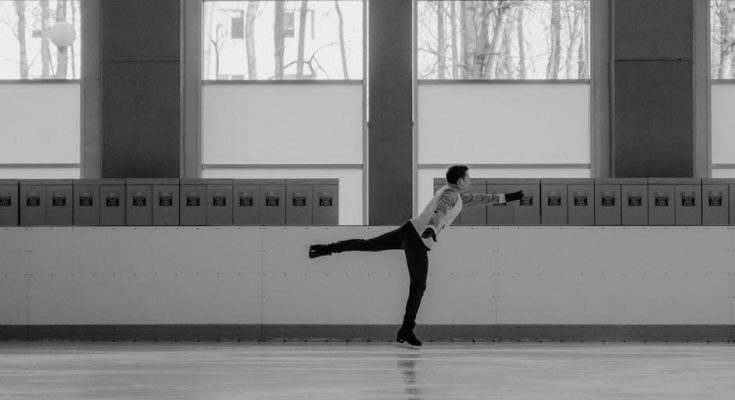Scapular dyskinesis refers to abnormal scapular motion, often linked to shoulder instability, muscle imbalances, and poor posture. Addressing it requires targeted exercises to restore proper movement and strength.
1.1 Definition and Overview
Scapular dyskinesis refers to an abnormal motion of the scapula during shoulder movements, often caused by muscle imbalances or poor posture. It disrupts normal shoulder mechanics, leading to instability, pain, or reduced mobility. This condition is closely associated with shoulder injuries, such as rotator cuff impingement or labral tears. Early identification and intervention are crucial to prevent chronic issues. Exercises targeting scapular stabilization and strength are foundational in managing this condition, aiming to restore proper motion and reduce discomfort. Addressing scapular dyskinesis involves a comprehensive approach, including strengthening, stretching, and postural correction, to enhance overall shoulder function and prevent further complications.
1.2 Importance of Scapular Stabilization
Scapular stabilization is essential for maintaining proper shoulder mechanics and preventing injuries. The scapula acts as a foundation for shoulder movement, ensuring efficient transfer of forces between the arm and the body. Poor stabilization can lead to muscle imbalances, reduced mobility, and chronic pain. Strengthening the scapular stabilizers, such as the serratus anterior and trapezius muscles, improves joint stability and enhances athletic performance. Additionally, proper stabilization reduces the risk of conditions like rotator cuff impingement and labral tears. Addressing scapular stabilization through targeted exercises is a cornerstone of rehabilitation and injury prevention, promoting long-term shoulder health and functionality.

Causes and Risk Factors
Muscle imbalances, poor posture, and repetitive movements are primary causes of scapular dyskinesis. Weakness in stabilizing muscles and overuse injuries can disrupt normal scapular mechanics, leading to dysfunction.
2.1 Muscle Imbalances and Weakness
Muscle imbalances and weakness are significant contributors to scapular dyskinesis. Weakness in the serratus anterior and trapezius muscles disrupts scapular stabilization, leading to abnormal movement patterns. Overactive or tight muscles, such as the pectoralis minor, can pull the scapula out of its normal position, further exacerbating the issue. These imbalances often result from poor posture, repetitive movements, or insufficient strength training. Addressing muscle weaknesses through targeted exercises, such as serratus punches and scapular holds, is crucial for restoring proper scapular mechanics and preventing further complications.

2.2 Poor Posture and Movement Patterns
Poor posture and movement patterns are key contributors to scapular dyskinesis. Forward head posture, rounded shoulders, and a slouched position can lead to altered scapular mechanics. Prolonged sitting or repetitive movements without proper form can create muscle imbalances, weakening stabilizing muscles like the serratus anterior and trapezius. This results in abnormal scapular movement, such as winging or excessive elevation. Additionally, repetitive overhead activities without adequate rest or strength training can exacerbate these issues. Addressing poor posture through ergonomic adjustments and mindful movement is essential to prevent and manage scapular dyskinesis effectively.

Symptoms and Diagnosis
Common symptoms include shoulder pain, limited mobility, and visible scapular winging. Diagnosis involves clinical evaluation, observing scapular movement during arm elevation, and assessing muscle imbalances.
3.1 Common Symptoms of Scapular Dyskinesis
Individuals with scapular dyskinesis often experience shoulder pain, reduced range of motion, and visible irregularities in scapular movement, such as winging. Pain may worsen with overhead activities or repetitive arm movements.
3.2 Clinical Evaluation and Assessment
Clinical evaluation of scapular dyskinesis involves a comprehensive assessment to identify abnormal scapular movement patterns. Physical examination includes palpation of the scapula during arm movements, observation of scapular winging, and evaluation of range of motion. Strength testing of shoulder muscles, such as the serratus anterior and trapezius, is also conducted. Special tests like the Scapular Assistance Test (SAT) and the Wall Slide Test are used to detect dyskinesis. These assessments help determine the presence of muscle imbalances, poor posture, or movement dysfunction. Accurate diagnosis is crucial for developing targeted rehabilitation programs to restore proper scapular mechanics and alleviate symptoms. Early identification ensures effective management and prevents progression of related shoulder pathologies.

Treatment and Rehabilitation Options
Treatment focuses on physical therapy, including strengthening and mobility exercises, to restore scapular function. Modalities like Theraband use and soft tissue mobilization may also be incorporated.

4.1 Role of Physical Therapy in Management
Physical therapy plays a central role in managing scapular dyskinesis by addressing muscle imbalances and improving scapular mechanics. A structured exercise program is typically implemented, focusing on strengthening key muscles such as the serratus anterior and trapezius. Techniques like scapular holds, wall slides, and resistance band exercises are commonly used to enhance stability and strength. Additionally, manual therapy and soft tissue mobilization may be incorporated to reduce tension in overactive muscles and improve joint mobility. The goal of physical therapy is to restore normal scapular motion, alleviate symptoms, and prevent recurrence. A personalized approach ensures exercises are tailored to the individual’s specific needs and progress.
4.2 Alternative Therapies and Modalities
Beyond physical therapy, alternative therapies can complement the management of scapular dyskinesis. Modalities such as therapeutic taping, massage, and heat therapy may be used to reduce muscle tension and improve mobility. Electrical stimulation can also be employed to activate weakened scapular muscles. Additionally, exercises using tools like Therabands are often incorporated to enhance strength and control. Soft tissue mobilization and joint mobilization techniques can further address muscle imbalances and joint stiffness. These alternative approaches aim to support the rehabilitation process, restore proper scapular mechanics, and reduce discomfort. They are typically used alongside structured exercise programs to promote comprehensive recovery and long-term stability.

Scapular Dyskinesis Exercise Program
A structured program includes scapular strengthening exercises like scapular holds, wall slides, and Theraband rows. These exercises target muscle imbalances and improve scapular stability and mobility.
5.1 Strengthening Exercises for the Scapula
Strengthening exercises for the scapula are essential to address muscle imbalances and improve stability. Key exercises include scapular holds, wall slides, and Theraband rows. Scapular holds involve squeezing the shoulder blades together, while wall slides focus on controlled scapular movement. Theraband rows target the rhomboids and trapezius muscles. Additionally, physioball exercises, such as rolling the hands side to side on a ball, enhance scapular strength. Shoulder shrugs and scapular punches also help strengthen the surrounding muscles. These exercises should be performed with proper form to avoid exacerbating dysfunction. Regular practice improves scapular stability, reducing the risk of injury and enhancing overall shoulder function.
5.2 Mobility and Stretching Exercises
Mobility and stretching exercises are crucial for improving scapular flexibility and reducing stiffness. Wall slides and shoulder flexion stretches target the anterior shoulder and chest muscles, promoting proper scapular movement. Pendulum swings and cross-body stretches enhance shoulder joint mobility and reduce tightness in the posterior muscles. Cat-camel stretches improve thoracic spine flexibility, which is essential for scapular alignment. Gentle range-of-motion exercises, such as arm circles and shoulder rotations, maintain mobility without overloading the joint. These exercises should be performed 2-3 times daily, focusing on controlled movements to avoid exacerbating dyskinesis. Regular stretching helps restore normal scapular mechanics, reducing the risk of injury and improving overall shoulder function.

Preventing Scapular Dyskinesis
Preventing scapular dyskinesis involves regular strengthening exercises, proper posture maintenance, and ergonomic adjustments. Consistent scapular stabilization and mobility exercises help maintain proper shoulder mechanics and reduce injury risk.
6.1 Ergonomic Adjustments and Postural Awareness
Ergonomic adjustments and postural awareness are crucial in preventing scapular dyskinesis. Ensuring proper workspace setup, such as positioning monitors at eye level and keyboards close to the body, reduces strain on the shoulders. Regular reminders to maintain upright posture, with shoulders relaxed and scapulae in neutral position, can prevent muscle imbalances. Strengthening exercises, like shoulder blade squeezes and scapular holds, complement ergonomic practices by promoting muscle stability. Additionally, incorporating movement breaks to stretch and move can counteract prolonged static postures. These practices, when consistently applied, help maintain optimal scapular mechanics and reduce the risk of developing dyskinesis. Consistency is key to long-term prevention and overall shoulder health.
6.2 Maintenance and Long-Term Management
Maintenance and long-term management of scapular dyskinesis require consistent practice of strengthening and mobility exercises. Regular routines, such as shoulder blade squeezes and scapular holds, help sustain muscle stability. Gradual progression of exercises, incorporating resistance bands or physioballs, ensures continued improvement. It’s important to maintain proper posture throughout daily activities and address any ergonomic issues to prevent relapse. Over time, integrating these exercises into a daily routine promotes long-term scapular health. Professional guidance from a physical therapist can provide personalized adjustments and monitoring. Consistency is key to preventing recurrence and ensuring optimal scapular function. Regular check-ins and adaptations to the exercise program help maintain progress and address any new challenges.



